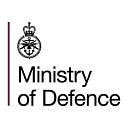“My whole life was being lived around making sure nobody else found out.”
WO2 Deborah Penny has served in the British Army for 34 years, and even has a portrait in the National Portrait Gallery, but it wasn’t until 2010 that she felt like she was serving as herself. Read her unique story here:
Deborah wanted to transition to live as a woman since she was young, but in her early career — more than 30 years ago — society viewed transgender people as ‘gay or mentally ill’. She says that without social media or computers, it was hard to know that there were others out there like her, or to find support.
Deborah felt for a long time that she was trying to lead multiple lives, none of them genuine. Despite this, she achieved many things in her career: completing a Commando course in 1986 and doing military exercises in many countries across more than a quarter of the Globe.
When she was doing a high pressure job as a Bomb Disposal Operator, her mental health began to suffer with the added pressure of putting on different faces for different parts of her life. She decided to take the brave step and transition.
The ban on transgender personnel in the military was lifted in 1999, one year before the ban on lesbian, gay and bisexual personnel was lifted.
After 18 years in the British Army, Deborah Penny approached a doctor:
“I either do this or I’m going to kill myself. I’d held off for so many years because of the transgender ban and because of my parents. I didn’t want to upset the family. My whole life was being lived around making sure nobody else found out. Years before, I started working out how to kill myself but make it look like an accident so I didn’t bring disgrace on the family.”
Now, 16 years after she first approached a doctor, she is the Warrant Officer for diversity and inclusion in Army Engagement. She is the first transgender soldier in a theatre of operations. She hopes to make sure that no other soldier has to go through what she went through:
“Look, I did it, I’ve made it, I survived. You can be the real you if you want to be.
I believe that at the end of the day every person has the right to be who they are and do the job to the best of their ability.”
Transitioning was a long road between 2004 and 2010. Before this, she would dress as a woman to go out with friends, but carefully remove her make-up and all signs of the night before returning to camp. It was a double life. Since her transition, she has a portrait in the National Portrait Gallery, has given a presentation on LGBTQ+ personnel to a 1 star officer, met a Defence Minister, and had multiple media appearances.
She says she owes her success to the invaluable support of friends, chain of command and the Army’s LGBTQ + forum. When asked about why the LGBTQ+ communities and networks are important, she said:
“I think it’s important because, at the end of the day, if you haven’t got support and you go it alone, your mental health will suffer. Support networks will give guidance for individuals and the chain of command.
You can’t go it alone. I tried because I didn’t realise half these networks were out there.”
This year she spent a few months working on the COVID Support Force in logistics for the South West, before joining her post in the Army Diversity Engagement Team. The team focus on breaking down barriers and addressing misconceptions about diversity in the Army. In the future, she hopes that she can apply her own experiences to help make a difference.
